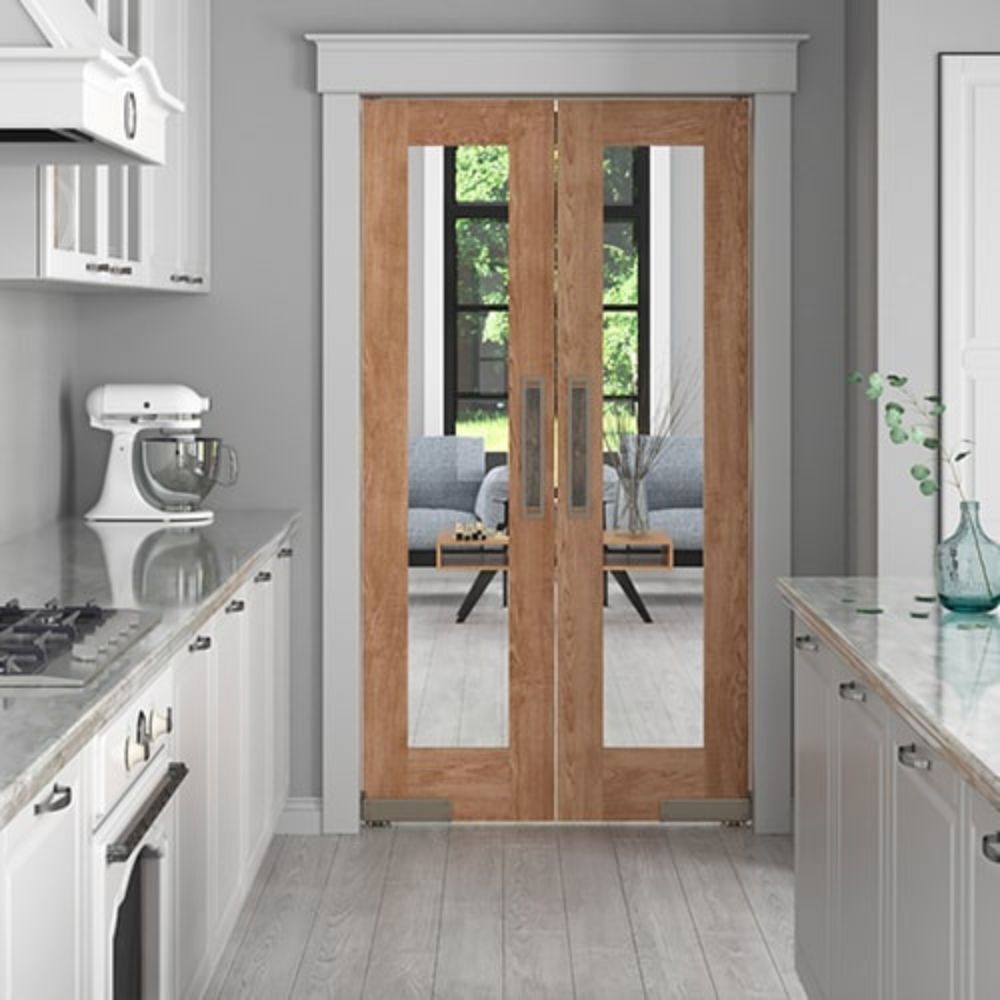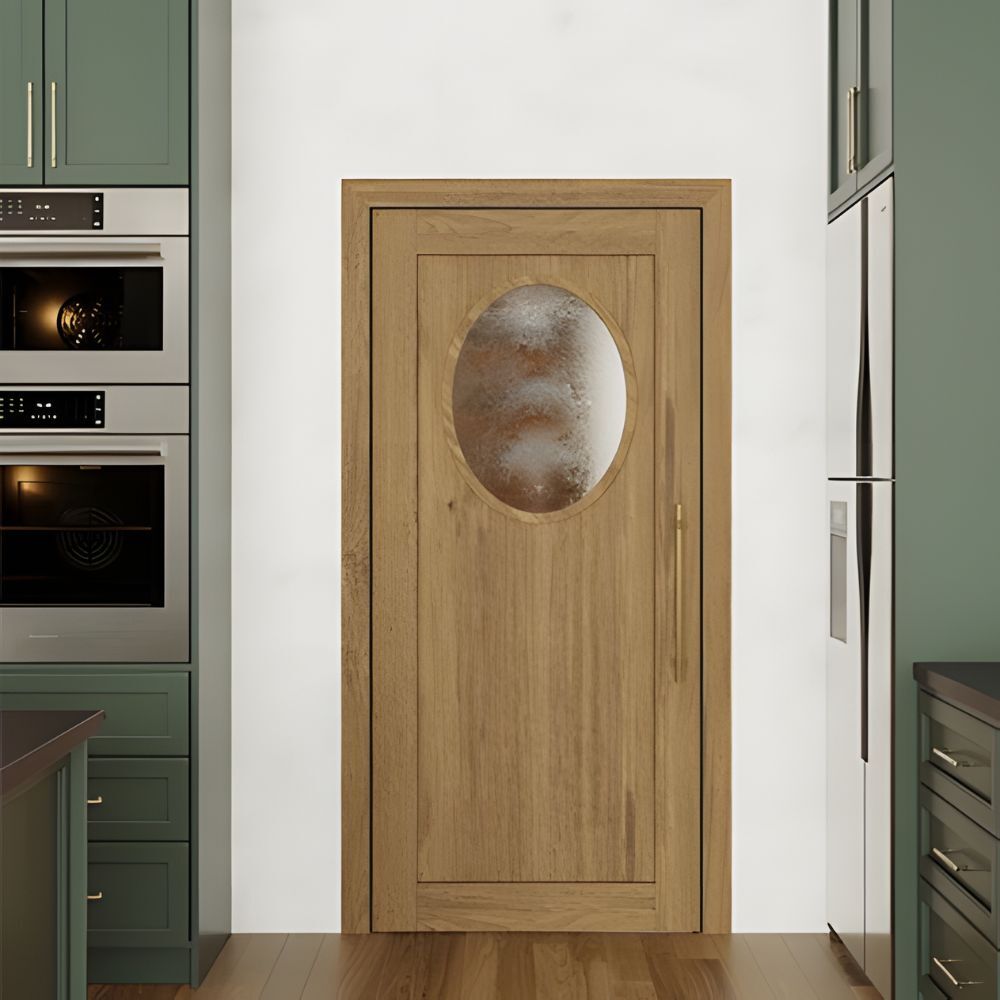
Matching Interior Door Styles to a Building’s Aesthetic
Key Takeaways:
- Understanding Your Home's Architectural Style
- Selecting Materials and Hardware for Each Style
- Creating Focal Points with Strategic Door Placement
Interior doors are more than functional barriers—they're key design elements that can enhance or disrupt your home's aesthetic. The right door seamlessly integrates with your architectural style, creating visual harmony, while mismatched doors can break the flow of your interior design. By aligning door styles with your home's architecture, you can transform these everyday features into purposeful design statements.
Each architectural style has distinct characteristics that influence materials, hardware, and door configurations. Whether you're renovating or designing a new space, choosing doors that complement your home's style provides a cohesive, polished look. Keep reading to discover how to match interior door styles to your building’s aesthetic.
Understanding Your Home's Architectural Style
Before selecting interior doors, you must identify your building's architectural style and its defining characteristics. Each style has specific design elements that should guide your door selection.
Modern Architecture
Modern architectural styles emphasize clean lines, neutral colors, and functionality above ornamentation. These spaces feature open floor plans, large windows, and minimal decorative elements. Modern homes often incorporate industrial materials like steel and glass alongside natural elements such as wood and stone.
For modern spaces, wood, metal, and glass doors with sleek, austere profiles fit best. Contemporary doors with minimalistic approaches and bold, straight lines work exceptionally well. Glass doors encourage natural light flow while maintaining the open aesthetic that modern design demands.
Farmhouse Style
Farmhouse architecture celebrates rustic charm and practical functionality. These homes feature exposed beams, shiplap walls, and vintage-inspired fixtures. The style balances comfort with casual elegance, often incorporating reclaimed materials and weathered finishes.
Sliding barn doors with rustic charm complement farmhouse interiors perfectly. These doors offer vintage vibes with space-saving practicality, making them ideal for smaller farmhouse spaces.
Industrial Style
Industrial architecture draws inspiration from warehouses and factories. These spaces feature exposed brick walls, steel beams, concrete floors, and utilitarian fixtures. The style embraces raw materials and celebrates structural elements that other architectural approaches hide.
Metal doors with industrial finishes elevate modern interiors while maintaining the raw, bold element characteristic of this style. Steel or aluminum doors work particularly well in loft apartments or minimalist workplaces. Consider doors with visible hardware and structural elements that complement the exposed building systems.
Colonial Architecture
Symmetrical facades, traditional proportions, and classic detailing are all hallmarks of the popular colonial-style home. These structures emphasize formal room arrangements, crown molding, and period-appropriate fixtures. The style prioritizes timeless elegance over trendy design elements.
French doors are common in colonial interiors, as they add elegance and natural light while maintaining the formal room divisions that colonial architecture requires. Choose doors with traditional panel configurations and classic hardware finishes that complement the home's historical character.

Selecting Materials and Hardware for Each Style
Now that you understand your building’s aesthetic, you can better match your interior door’s style to it. Material selection significantly impacts how well your doors integrate with your architectural style, so consider whether materials like wood, glass, or metal match your home best.
Wood Door Options
Wood remains a perennial favorite for its warmth and natural aesthetic, which complement nearly every interior theme. From rich walnut finishes that evoke luxury to reclaimed lumber that lends rustic charm, wood offers versatility across architectural styles.
For farmhouse styles, choose doors with visible wood grain and natural imperfections that enhance authenticity. Modern homes benefit from smooth, clean wood finishes in lighter tones. Colonial interiors require traditional wood species with classic staining that matches existing trim work.
Glass Door Applications
One way to incorporate multiple architectural styles is through glass doors. Clear or frosted glass integrates visibility and openness, making rooms feel more spacious without losing the boundary a door provides. For bolder effects, consider colored or textured glass that creates visual interest.
Modern homes use frameless glass doors to maintain clean sightlines and maximize natural light. Industrial spaces benefit from glass doors with metal frames that reference factory windows. Even traditional styles can incorporate glass doors when framed with appropriate materials and proportions.
Metal Door Integration
Metal doors with industrial finishes elevate modern interiors with strikingly raw and bold elements. Steel or aluminum doors work effectively in loft apartments or minimalist designs where structural honesty takes precedence over decorative elements.
Consider metal doors for industrial and modern architectural styles, where their utilitarian appearance supports the overall design philosophy. Select finishes that complement existing metal elements throughout the space, such as light fixtures, cabinet hardware, or structural components.
Hardware Finish Coordination
When choosing new doors for your space, don’t forget the hardware. Satin chrome, oil rubbed bronze, brass, and black finishes each carry distinct visual weights and style associations that must align with your architectural approach.
Modern styles benefit from sleek chrome or black hardware with minimal profiles. Farmhouse interiors require bronze or brass finishes with a more substantial visual presence. Industrial styles embrace raw metal finishes that celebrate their utilitarian origins.
Creating Focal Points with Strategic Door Placement
Interior doors can serve as intentional focal points that boost your architectural style rather than simply dividing spaces. Strategic placement and unique design elements transform functional doors into artistic statements.
Scale and Proportion Considerations
Double doors emphasize grandeur in major entrances, such as transitions into dining areas or master bedrooms. These configurations work particularly well in colonial and traditional homes where formal room arrangements support such dramatic gestures.
A central statement door in a long hallway anchors an otherwise plain corridor into an artistic focal point. Consider the surrounding architecture when determining appropriate door scales that complement rather than overwhelm the space.
Unique Door Configurations
Explore unique configurations such as dramatic arched doorways that evoke classical elegance or minimalist hidden doors that seamlessly integrate into wall paneling. These approaches require careful coordination with your architectural style to maintain visual coherence.
Bi-fold or accordion-style doors reveal functional opportunities for transitioning between indoor and outdoor spaces. These configurations work particularly well in modern homes where indoor-outdoor living takes precedence over formal room divisions.
Material Selection for Visual Impact
Different materials create varying levels of visual impact as focal points. Rich walnut finishes command attention through their luxurious appearance, while reclaimed lumber adds character through its weathered patina and historical associations. For ultra-modern designs, resin or acrylic doors open innovative possibilities, enabling creative experimentation with embedded patterns, three-dimensional textures, or layered colors that create futuristic appearances.
Smart Technology Integration
If you want your home to be a smart home, you can also integrate advanced technology into your door choice. Smart door technologies include keyless entry systems and security features that provide convenience and peace of mind.
Homeowners can even control automated sliding or pivot doors via mobile applications or voice commands in modern homes where technology integration aligns with the architectural philosophy. Traditional styles require more discrete technological integration that doesn't compromise period authenticity.

Making Informed Door Selection Decisions
Selecting interior doors involves carefully balancing architectural style, material preferences, functional requirements, and budget considerations. The most successful door selections augment your home's existing character while meeting contemporary performance standards. Always consider your home's architectural style as the foundational guide for all door selection decisions, influencing material choices, hardware finishes, and configuration options.
Remember that doors are a long-term design investment. If you are looking to add a unique touch with practical functionality, explore the diverse range of Swinging Cafe Doors.
